
With its George Town UNESCO World Heritage Site, 7 World Wonders of Penang, 130-million-year-old ancient rainforest, picturesque beaches, and breathtaking street art, it's no secret that Penang island is the vacation gem of the state, attracting visitors all year round.
But away from the well-traversed island and over on the mainland, Kepala Batas is a hidden gem waiting for your visit. Sitting on the bank of Sungai Muda, with Kedah's Gunung Jerai in its backyard, the township offers spectacular views of rice fields, traditional Malay kampung houses, and a rare glimpse into the nation's prehistoric civilization.
Picturesque Rice Fields

Located on the northern part of Seberang Perai, Kepala Batas is an agricultural village with wide expanse of paddy fields and palm oil plantations. Historically, the area was surrounded by rubber trees (which were replaced by oil palm plantations later) and paddy fields in the 50s and 60s. Today, while many of the oil palm plantations have been cleared for development, the rice fields remain the economic backbone for farmers, and a visual gem for shutterbugs and Instagrammers.
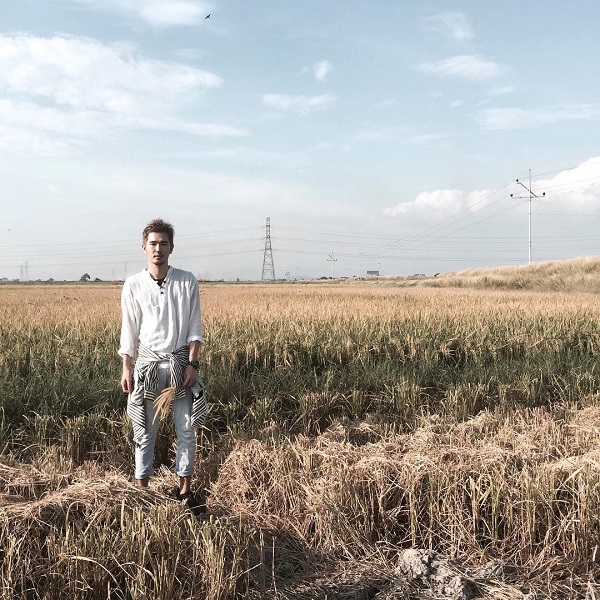
“Unlike Penang island, there are no tall buildings and skyscrapers. Over here, you see a lot of flatlands filled with paddy fields. That’s why I love taking photos here,” says Kepala Batas native Suhayl Azmin Osman, who is a freelance videographer.
“Nevertheless, they are not always green or yellow. Sometimes, all you get is dry patches of land. Generally, rice fields are harvested in February and September. So, make sure you time your visit,” he says.
Guar Kepah: Stone Age Settlement Older Than Bujang Valley
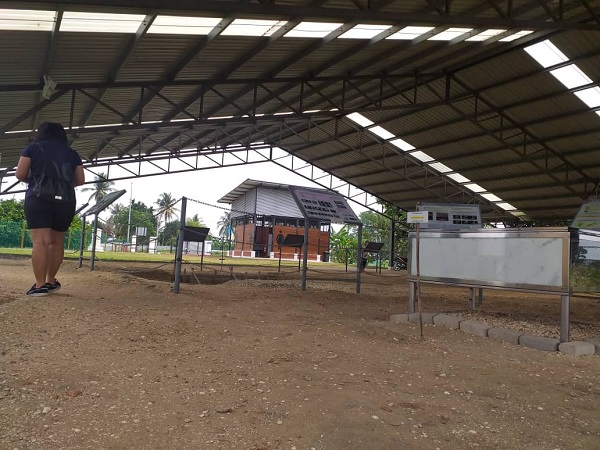
Established in 2019, Galeri Arkeologi Guar Kepah is an archeological site where ancient shell middens and a 5,000-year-old skeleton named “Penang Woman'' were excavated. Before the discovery of the "Penang Woman," numerous human remains, along with seashells, pottery, and hunting tools were excavated by British archaeologists between 1851 and 1934. The skeletons excavated by the British archaeologists are now in the National Natuurhistorisch Museum in Netherlands, while the “Penang Woman'' is still being carefully conserved in Universiti Sains Malaysia as it has to be in a temperature and humidity-controlled environment.
These findings proved that Guar Kepah is the only location in Peninsular Malaysia with ancient human settlements close to the sea. It also confirmed that the settlement is older than the Bujang Valley and Sungai Batu civilizations in Kedah.


Galeri Arkeologi Guar Kepah
Address: PT 23, Mukim 2, Kepala Batas
Operating Hours: 8am-5pm (daily)
Fees: Free
Capal: Kepala Batas’ Heritage Trade
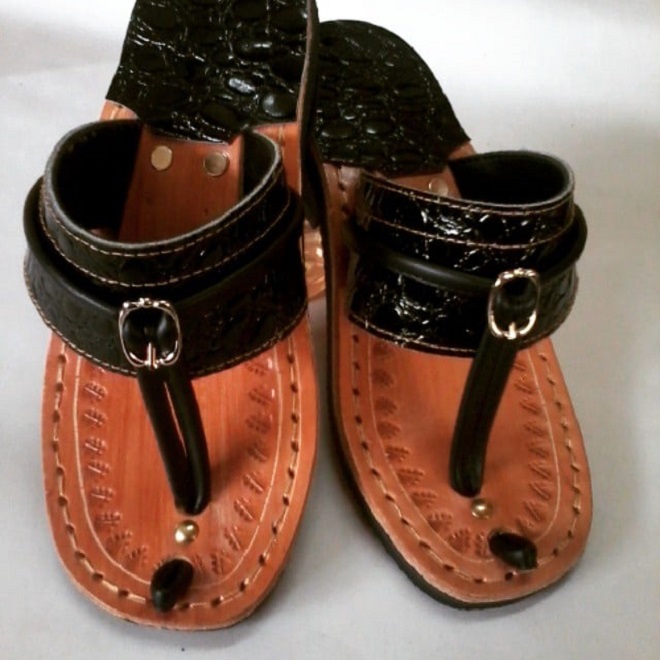
Before sneakers, flip-flops, and other footwear options, there were capal, a traditional Malay footwear. Seberang Perai Utara, including Kepala Batas, was a centre for Islamic studies. Ulamas came from all over, including Palembang, to teach and learn Islam. [2]
These ulamas also brought cultural influences with them, such as the capal, which is a traditional Sumatran footwear. Since the early 20th century, capal (also known as kasut Palembang or kasut P. Ramlee) has been part of the Malay costume, worn with baju Melayu, samping, and songkok. As footwear evolved into fashionable sneakers and sandals, capal became less popular and are slowly fading away.
"My father told me people of all races wore capal back in the 60s. But these days, it's a vanishing trade. Some of my friends who stay on the island have to travel here to get a pair of capal," says Suhayl.
Here in Kepala Batas, JAGO is a homegrown capal brand founded by the late Haji Hashim Hassan, a famous Kepala Batas capal maker in 1958, reputed to have made the first genuine handmade leather sandals. This traditional trade is now inherited by his youngest son Badril Shahidan Hashim. With only less than ten capal makers in Malaysia today, buying a JAGO capal guarantees you a traditional footwear and an investment in Kepala Batas' rich cultural heritage.
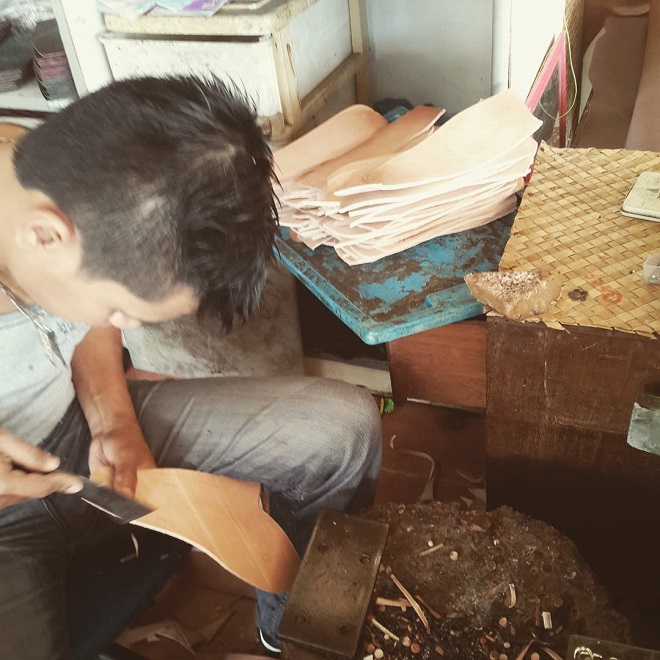
Capal Jago Gemilang
Address: 708, Jalan Perak, Kepala Batas
Traditional Malay Kampung Houses
As a predominantly Malay settlement, Kepala Batas has a good repository of traditional Malay kampung houses. One of the most common types of traditional Malay houses is Rumah Serambi Gajah Menyusu (literally ‘Breastfeeding Elephant Porch House’) where the house's porch is lower than the main section of the hall, resembling a baby elephant suckling its mother.
Instagrammer Alif Zamre suggests visitors to head to Jalan Permatang Rambai to view well-preserved kampung houses. “The three houses are located along the same road, so it makes a convenient drive to view these beautifully preserved kampung houses,” he says.
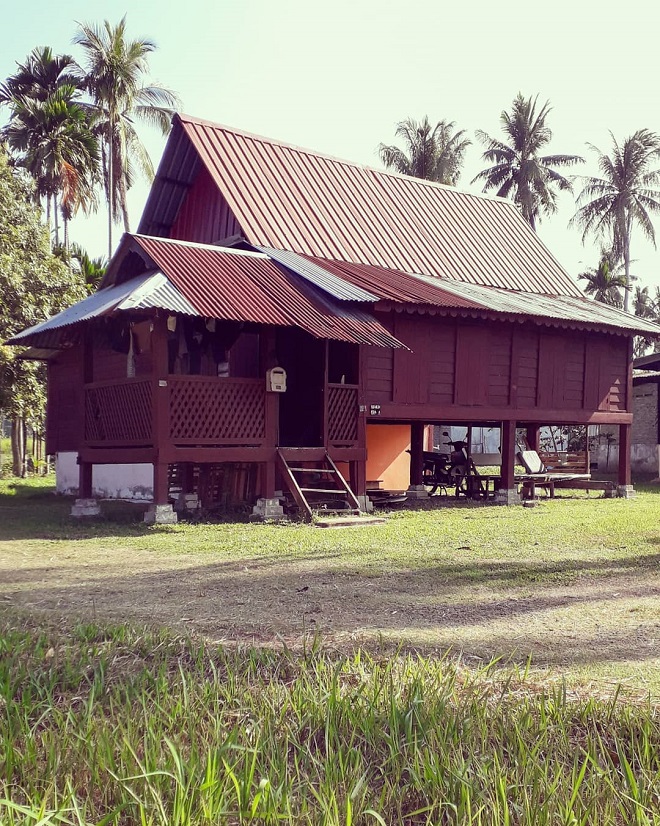
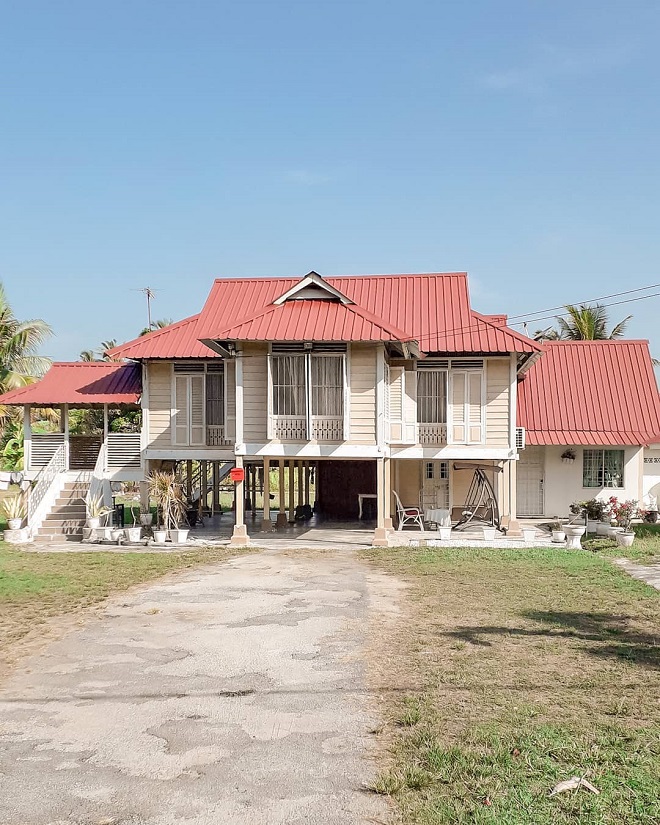

Malay Food Central
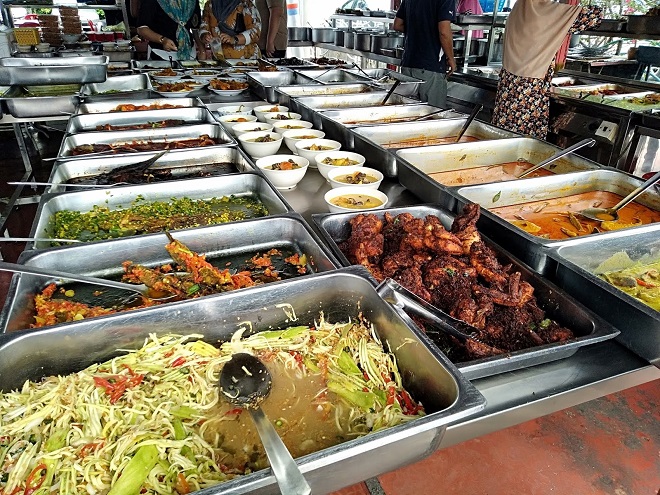
While the Indian Muslims dominate Penang island’s halal foodscapes, Kepala Batas is the home of hearty Malay meals and fresh seafood, thanks to its rural Malay setting nearby Sungai Muda, which empties into the Straits of Malacca. There are plenty of Malay dishes to try, from Nasi Campur with an assortment of kampung-style lauk (side dishes), to Cucur Udang, Nasi Lemak, Mee Rebus, and local fresh seafood dishes like Mee Kuah and Ikan Bakar.

“I would usually drive over to the island for Nasi Kandar, but for Malay food, I personally think Kepala Batas has a healthy spread. Nasi Campur stalls like Hawa Nasi Campur serve good selections of Malay-style side dishes like Gulai Telur Ikan and Sambal Telur while Restoran Ikan Bakar Din is famous amongst tourists looking for freshly grilled seafood!” says Suhayl.
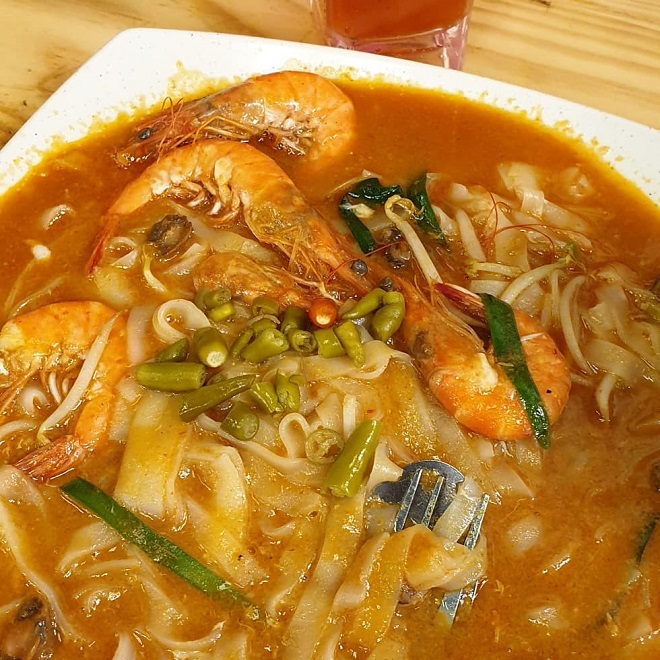
However, one Malay dish stands out from the rest - Char Koay Teow. This uniquely Penang Malay dish is a halal take on the Chinese classic street food of the same name, but it has a distinctive taste of its own. Malay Char Koay Teow is a gravy-filled flat noodle dish flavoured with prawn broth. Fried on a hot wok, it contains fillings such as chives, cockles, eggs, shrimps, and beansprouts, then topped off with pickled chillies. This area is home to around ten Char Koay Teow stalls and restaurants, so it’s by far the best place to try this dish.
Char Koay Teow CIMB Kepala Batas
Address: Jalan Usahawan 1, 13200 Kepala Batas
Operating hours: 5:30pm - 11pm (closed on Saturday)
Hawa Nasi Campur
Address: 1892, Jalan Dato Haji Ahmad Badawi, 13200 Kepala Batas, Pulau Pinang.
Operating hours: 8am - 4pm (daily)
Heryany Kitchen
Address: 26G Jalan Dagangan 14 Pusat Bandar Bertam Perdana
Operating hours: 9am - 6pm (closed on Saturday and Sunday)
Mak Long Mee Rebus
Address: Lorong Paya Keladi 3, Taman Paya Keladi, 13200 Kepala Batas
Operation hours: 11.30am – 7pm (closed on Saturday)
Restoran Ikan Bakar Din
Address: 6735, Jalan Butterworth, Kampung Permatang Manggis, 13200 Kepala Batas, Pulau Pinang
Hours: 11am to 4pm (daily)
Nasi Lemak Abe Ayam Berempah
10976, Guar Kepayang, Kepala Batas
Hours: 4.00 petang -12 malam (closed on Sunday)
Restoran Shahul Hamid Cucur Udang
Address: 45, Jalan Butterworth, 13200 Kepala Batas, Pulau Pinang
Operating hours: 8am to 9:30pm (daily)
Heritage Sites
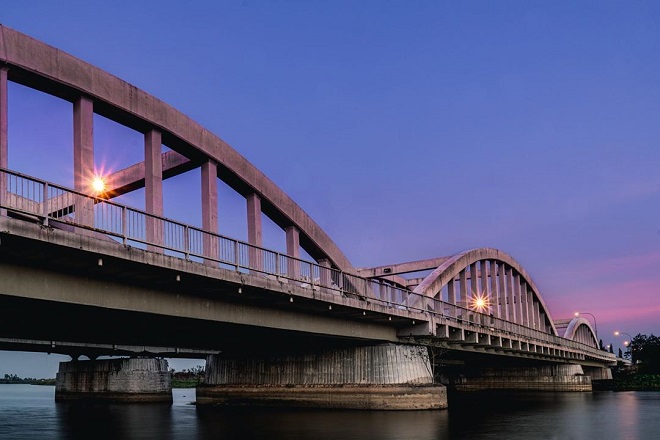
Many visitors will be pleasantly surprised that one heritage site in Kepala Batas speaks to the nation's independence, which is Jambatan Merdeka. The bridge was constructed to replace an older bridge which was destroyed by the British army to slow down the advances of the Japanese troop when they invaded the Malay Peninsula in 1942. Prime Minister Tunku Abdul Rahman officially opened Jambatan Merdeka (Merdeka Bridge) in 1957, the year the country gained independence.
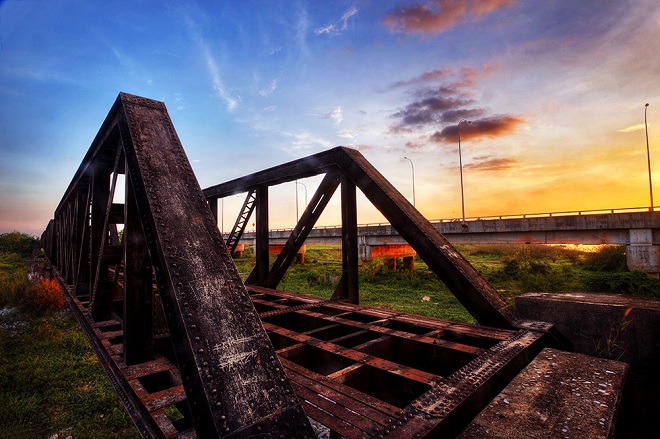
Another historical site worth visiting is the Jambatan Keretapi Pinang Tunggal, a solid black-coloured wrought iron bridge that hulked over the Muda River. Estimated to be built between 1912 and 1915, it is a triumph of early modern British engineering. [3]
"When I was a child, my family and I would pass by the railway to return to my father's village in Baling, Kedah. I remember hoping to see a passing train each time I set my sight on the railway crossing, not knowing that the bridge was no longer in use for a long time," says photographer Ridhuan Abu Bakar, 38.
Although no longer in use, the wrought iron bridge is a favourite subject for photographers looking to capture an engineering masterpiece of a bygone era. Villagers can still be seen using the bridge as a crossing.
Tourist Attractions
Due to its close proximity to the Kedah border, Kepala Batas is a convenient spot to spend an additional day before leaving the state. There are tourist attractions in nearby towns like Penaga and Tasek Gelugor for visitors looking to maximise their visit, too.

Located just a short drive away from Jambatan Merdeka, Pasar Bisik is a central trading point for fishermen and fishmongers from the surrounding areas, including Kedah and Perak. The fishermen here practice a bizarre trading ritual where bidders whisper into the fishermen's ears for the day's catch. This trading practice is considered by many as a living heritage; you will not find any other 'whispering' fish auction market anywhere else.

Another place of interest worth checking out is Kampung Agong in Penaga. Highly rated by netizens on social media, it boasts an Instagram worthy kampung-style location with traditional wooden houses overlooking paddy fields and coconut trees. For an entrance fee of RM6, visitors can walk or cycle around and make use of the unique photo opportunities such as the giant bird-nest swings.
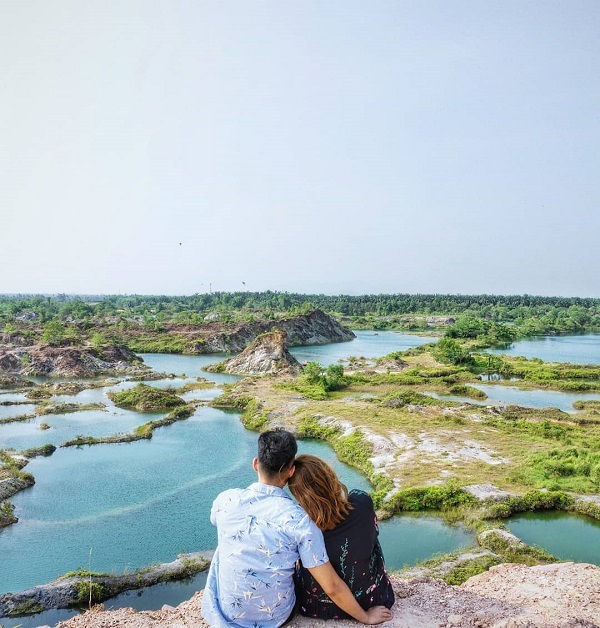
Outdoor enthusiasts can find some of the state’s best hikes in Frog Hill, Tasek Gelugor. Deemed as the smaller version of China’s well-known Jiuzhaigo, Frog Hill is an abandoned tin mining site which boasts clear turquoise-coloured water. The hike to the peak of this hidden gem is not too challenging, making it an ideal activity for families. Occasionally, wild water buffaloes can be seen taking a dip in the waters, which makes for quite a unique encounter with nature!
Travel reminder: Frog Hill is a remote area so visitors are advised to exercise extra precautions.
Pengkalan Bisik Kuala Muda
Address: Kuala Muda, 13110 Penaga
Operating hours: 10:30am - 2:30pm (daily)
Kampung Agong
Address: Lot 20, Mukim 05, Bakar Kapur, Penaga, Seberang Perai Utara
Operating hours: 9am - 6pm (daily)
Frog Hill
Address: No road signs point to this abandoned stone and clay quarry. To get there, enter these into your GPS navigator: 5.436643, 100.485111.
Citation:
[1]https://www.theborneopost.com/2017/05/20/archaeologists-strike-gold-with-new-find/
[2]https://www.born-in-malaysia.com/in-his-fathers-footsteps/
[3]http://butterworthguide.com.my/index.php/seberang-perai-utara/75-n-08-pinang-tunggal-railway-bridge